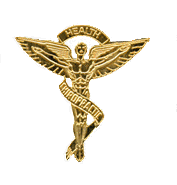Understanding Migraines: A Guide for Caring Women Balancing Family and Career
 Women suffer Migraines much more-so than men. As a woman balancing the demands of a career, a family, and the care of aging parents, your days are often packed. But when a migraine strikes, everything can grind to a halt, leaving you unable to focus on your responsibilities or care for your loved ones. Migraines are more than just headaches—they can disrupt your life, making it challenging to juggle your professional and personal roles. Understanding what triggers migraines and exploring natural ways to manage them can help you regain control and be there for the people who need you most.
Women suffer Migraines much more-so than men. As a woman balancing the demands of a career, a family, and the care of aging parents, your days are often packed. But when a migraine strikes, everything can grind to a halt, leaving you unable to focus on your responsibilities or care for your loved ones. Migraines are more than just headaches—they can disrupt your life, making it challenging to juggle your professional and personal roles. Understanding what triggers migraines and exploring natural ways to manage them can help you regain control and be there for the people who need you most.
What Exactly Is a Migraine? Migraines aren’t simply intense headaches. They’re the result of a complex neurological process in your body. Often triggered by external factors such as stress, hormonal changes, or even certain foods, migraines start with a series of events in the brain.
This initial phase, called the “prodromal” phase, can include early warning signs like:
- Nausea
- Visual disturbances (seeing spots or flashes of light)
- Speech difficulties
- Sweating
- Tingling in the face or limbs
While these symptoms can pass without pain, the body is already reacting. When the migraine progresses, the pain sets in, often overwhelming, leaving you unable to function at your best for hours—or even days.
Why Do Migraines Hurt So Much? Migraines are caused by changes in the arteries of the brain. After constriction, the artery overcompensates by dilating too much. This causes the sensitive artery walls to stretch, triggering the pulsating, throbbing pain associated with migraines. Each heartbeat sends more blood through these dilated arteries, worsening the discomfort. As a busy woman managing multiple responsibilities, this kind of pain can feel unbearable when you’re trying to stay present at work, care for your children, or help an aging parent.
Common Migraine Triggers for Women: For many women, migraine triggers are tied to everyday life events. The hormonal fluctuations that come with menstruation, pregnancy, or menopause are common culprits. However, triggers can also include:
- Emotional stress or anxiety
- Bright lights or strong odors
- Changes in sleep patterns (especially if your sleep is disrupted by caring for a loved one)
- Certain foods or beverages, such as caffeine, alcohol, or aged cheese
Knowing your personal migraine triggers is crucial, especially when you’re trying to stay healthy for the ones you love.
Can Chiropractic Care Help with Migraines? If you’ve been trying to find ways to manage migraines without resorting to medication, chiropractic care might offer a natural, non-invasive solution. Spinal misalignments, especially in the neck and mid-back, can interfere with your nervous system, potentially leading to migraines. Chiropractic adjustments aim to realign the spine and restore proper nerve function, which can reduce the frequency and intensity of migraines.
For a woman with a busy schedule and loved ones depending on her, chiropractic care provides a holistic option that doesn’t just mask the symptoms—it addresses the root causes. By improving spinal alignment, you can experience relief from migraines and minimize future occurrences, allowing you to return to your day-to-day activities with greater ease.
Migraines involve more than just severe headaches; they are the result of a complex interaction between the nervous system and hormones, known as neurohumoral mechanisms. These events involve changes in brain chemistry, blood flow, and nerve function, especially in women who are more susceptible due to factors like hormonal shifts, stress, and environmental triggers.
Neurohumoral Mechanisms in Migraines: Migraines begin with disruptions in the brain’s trigeminovascular system, which controls blood vessels in the brain. This can lead to the release of chemicals like calcitonin gene-related peptide (CGRP), causing blood vessels to dilate and resulting in the characteristic throbbing pain. One aspect of migraine pain theory explains that migraine pain happens due to waves of activity by groups of excitable brain cells. These trigger chemicals, such as serotonin, to narrow blood vessels. Serotonin is a chemical necessary for communication between nerve cells; lower serotonin can cause blood vessels to constrict and then over-dilate, triggering a migraine.
Migraines are also linked to dysregulation in the autonomic nervous system (ANS), which controls automatic body functions like heart rate and blood vessel tone. When the sympathetic nervous system (SNS) is overstimulated, often due to stress or misalignments in the spine, it can contribute to the blood vessel changes that lead to migraines. Conversely, the parasympathetic nervous system (PNS) may be underactive, reducing the body’s ability to counteract stress and inflammation.
The Spine’s Role in Migraine Triggers: The upper cervical spine, especially the C1 (atlas) and C2 (axis) vertebrae, has a direct influence on the ANS. Misalignments in these areas can disrupt nerve function, leading to an imbalance between the SNS and PNS. This interference can make a person more vulnerable to migraine triggers like hormonal changes, bright lights, or sleep disruptions.
When the spine is misaligned, it can also impact the flow of cerebrospinal fluid (CSF), leading to increased pressure in the brain and irritation of nerves like the trigeminal nerve, which is closely linked to migraine symptoms. Poor spinal alignment may also cause faulty proprioceptive signals, confusing the brain and worsening migraine attacks.
Chiropractic Care for Migraines: Chiropractic care aims to restore proper alignment in the cervical spine, improving nerve communication and balancing the ANS. By correcting misalignments, chiropractic adjustments reduce nerve interference, helping to regulate blood vessel function and prevent the neurohumoral imbalances that trigger migraines.
Chiropractic adjustments also enhance vagus nerve function, which is part of the PNS and helps control inflammation, stress response, and vascular tone. This holistic approach can provide natural relief from migraines, helping to prevent future episodes while promoting overall spinal and nervous system health.
In short, chiropractic care offers a non-invasive, drug-free solution for managing migraines by addressing their root causes—spinal misalignments and autonomic nervous system dysfunction
A Natural Approach for Busy Women When you’re juggling multiple roles—whether as a professional, a mother, or a caregiver for elderly parents—you need solutions that work. Chiropractic care offers a drug-free, holistic approach to preventing migraines so you can get back to doing what matters most. Many women report feeling immediate relief after chiropractic adjustments, with less pain and fewer migraine episodes in the future.
If you’ve been struggling with migraines and want to explore a natural path to wellness, chiropractic care could be just the solution you need. As a special offer for our readers, take advantage of 20% off your first chiropractic visit, including a full consultation, spinal evaluation, and x-ray interpretation. Book your appointment today and take the first step toward a migraine-free life, so you can focus on what truly matters… your family, your career, and yourself.



No Comments